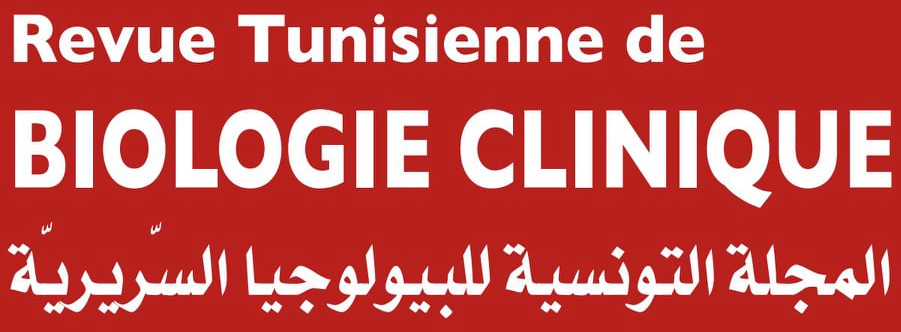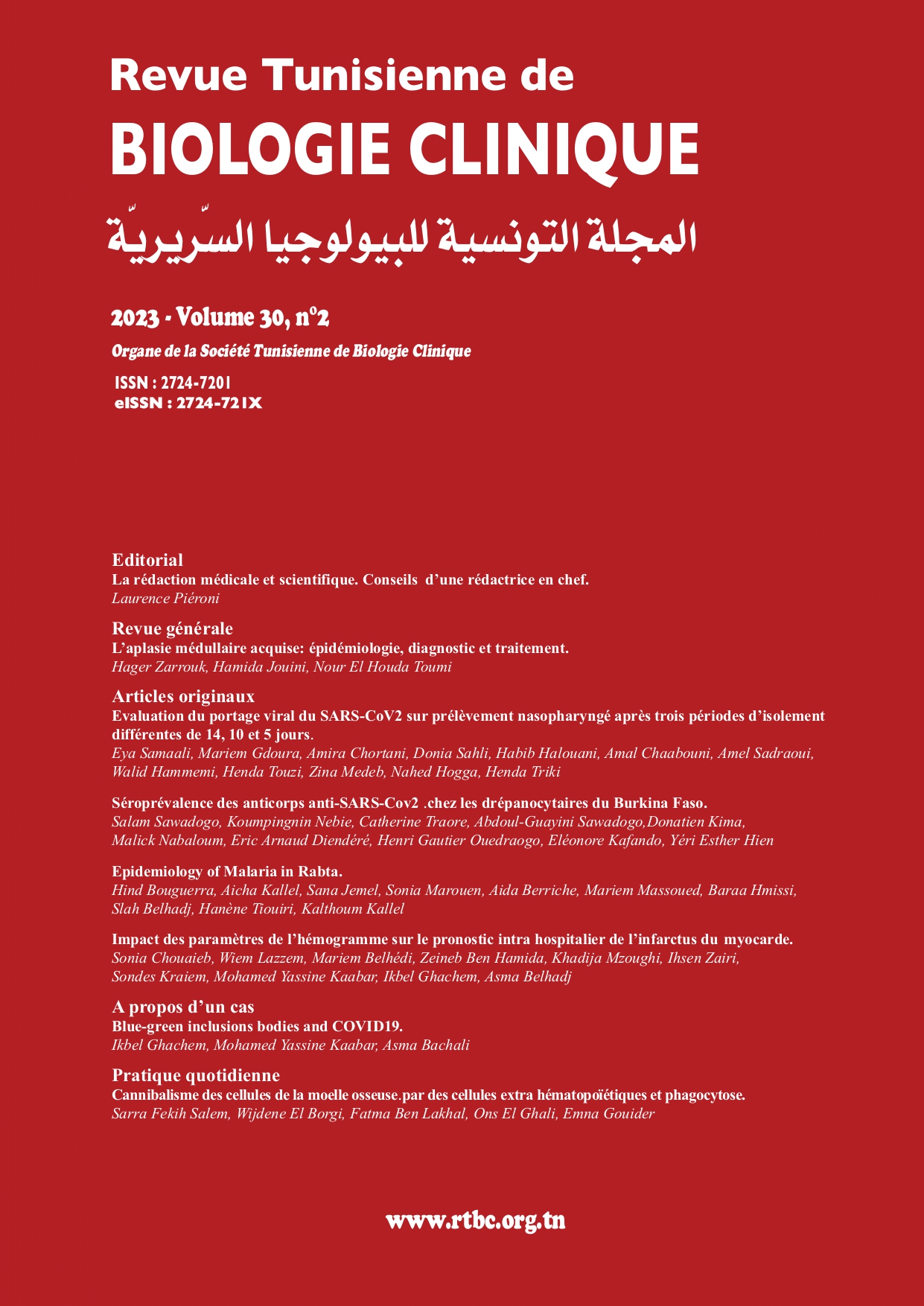Résumé
Introduction : Au cours de la pandémie COVID-19, la Tunisie s’est alignée aux recommandations internationales en termes de stratégies de dépistage, d’isolement et de levée d’isolement. Au fil des différentes poussées épidémiologiques, la période d’isolement a été baissée à deux reprises, de 14 à 10 jours, dans un premier temps, en Novembre 2021, puis de 10 à 5 jours, dans un deuxième temps, en Janvier 2022. Nous nous sommes proposés d’évaluer la clearance virale à la fin de ces différentes périodes d’isolement et de discuter nos résultats en fonction des variants du SARS-CoV2 qui circulent et de l’avancement de la vaccination anti-SARS-CoV2. Matériel et méthodes : Nous avons mené une étude prospective entre le 1er Septembre 2020 et le 31 Mars 2022 sur 3 groupes du personnel de l’Institut Pasteur de Tunis et leurs membres de famille, infectés au SARS-CoV2. Les 3 groupes G1, G2 et G3 ont été prélevés après l’achèvement de la période d’isolement en vigueur ; de 14, 10 et 5 jours, respectivement. Il s’agit de prélèvements naso-pharyngés qui ont été testés par RT-PCR en temps réel au laboratoire de virologie clinique de l’IPT. Les résultats des RT-PCR et les valeurs de Ct ont été analysés statistiquement par le logiciel SPSS. Résultats : Un total de 128 patients a été inclus dans cette étude et répartis comme suit : n=46 pour G1, n=44 pour G2 et n=38 pour G3. La proportion des patients négatifs est plus importante dans G1 tandis que la proportion des positifs est la plus importante dans G3. Aucune différence significative n’a été retrouvée entre les proportions de positifs ayant des valeurs de Ct<30 entre le G1 et le G2. Pour le G1, la moyenne des valeurs de Ct est de 33,7±2,9, pour le G2, la moyenne des valeurs de Ct est de 28,8±2,7, et pour le G3, la moyenne des valeurs de Ct est de 22,8±4,5. Les différences sont significatives d’un groupe à l’autre. Discussion : Nos résultats suggèrent que le fait d’isoler les patients pendant 10 jours garantissait une reprise des activités avec un portage viral très faible associé à un risque de dissémination viral négligeable. Toutefois, la reprise après 5 jours semble constituer un risque de contagion non négligeable, sachant que le variant Omicron et ses sous-variants qui circulait sont extrêmement contagieux dans un contexte d’immunité de groupe incomplète.

Ce travail est disponible sous la licence Creative Commons Attribution 4.0 International .
(c) Tous droits réservés Eya Samaali, Mariem Gdoura, Amira Chortani, Donia Sahli, Habib Halouani, Amal Chaabouni, Amel Sadraoui, Walid Hammemi, Henda Touzi, Zina Medeb, Nahed Hogga, Henda Triki 2023

